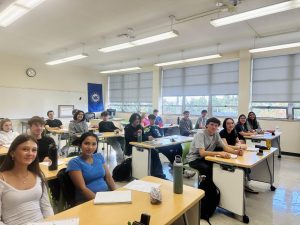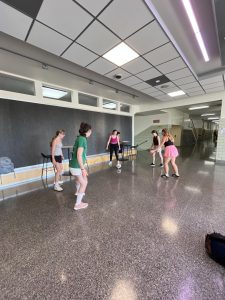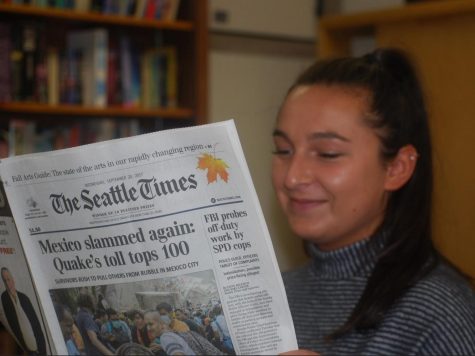Where Are Our Lanes?
April 30, 2018
Seattle’s leaders are working to build a network of connected bike lanes. In Vancouver, cycling numbers are up due to their already existing network. This has caused driving numbers to decrease. And the opposition has largely melted away.
Every bike lane in Seattle, whether a painted white line or a separated, landscaped bikeway, seems to be fought for in a never-ending battle over street space. Seattle has been trying to build one 1.4-mile stretch of bike path in Ballard for nearly three decades.
In less than a decade, Vancouver has stitched together a network of bike lanes that lets cyclists navigate downtown and beyond without being too close to cars. They are mostly separate from traffic.
The share of bike commuters in Seattle is about 3 percent, but now more than 10 percent of commutes are made by bike in Vancouver.
Downtown Vancouver consists of interconnected bike infrastructure. Bike lanes aren’t painted or marked with pylons. They are separated from traffic with planter boxes or other solid dividers. There are bright-green crossings, special bike traffic signals, turn restrictions for cars and all manner of textured pavement, sidewalk bulbs and signage.
“A lot of North American cities, when we build a bikeway,” said Kay Teschke, a professor emeritus of public health at the University of British Columbia. “We tend to build a one-off and then, because they’re not connected to anything, it’s not surprising that they don’t get used. They just don’t make people feel comfortable.”
Seattle has built protected bikeways on Second Avenue, Westlake Avenue North, Seventh Avenue, Pine Street, and Pike Street. There are also partially protected bike lanes on Ninth Avenue and South Dearborn Street.They do not connect to each other, and bikers still have to go through car traffic to get from lane to lane.
“They (Vancouver) decided to invest politically and financially in a downtown bike network,” said Kelsey Mesher, former Puget Sound policy manager for the Cascade Bicycle Club, “we’re almost there, but it’s not quite working like it is in Vancouver.”
There is not a large number of students who commute to school by bike, but many do bike in their free time and hope for safer biking situations.
“I don’t bike everywhere, but I do spend a lot of time biking and enjoy it.” said senior Parker Rathbun. “I am kind of indifferent on the subject of bike lanes in Seattle, but I know it is a wiser and safer option for the avid bikers in the city.”





